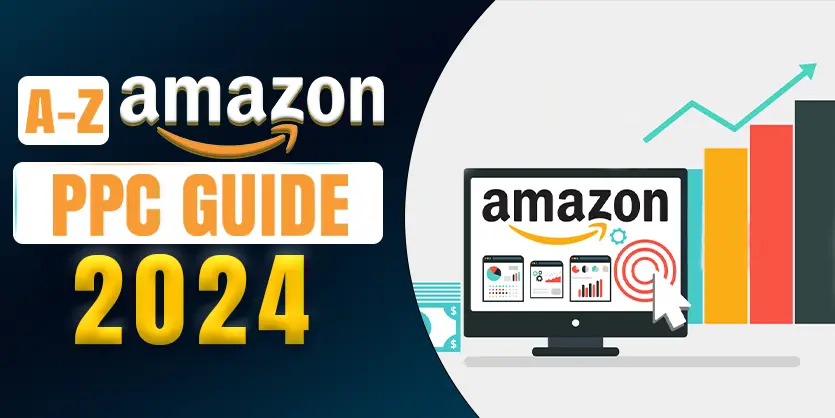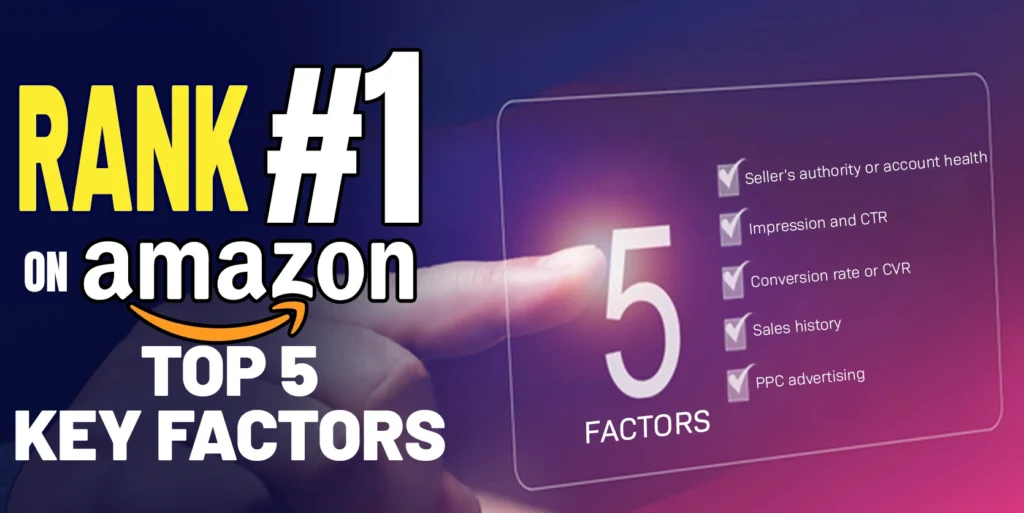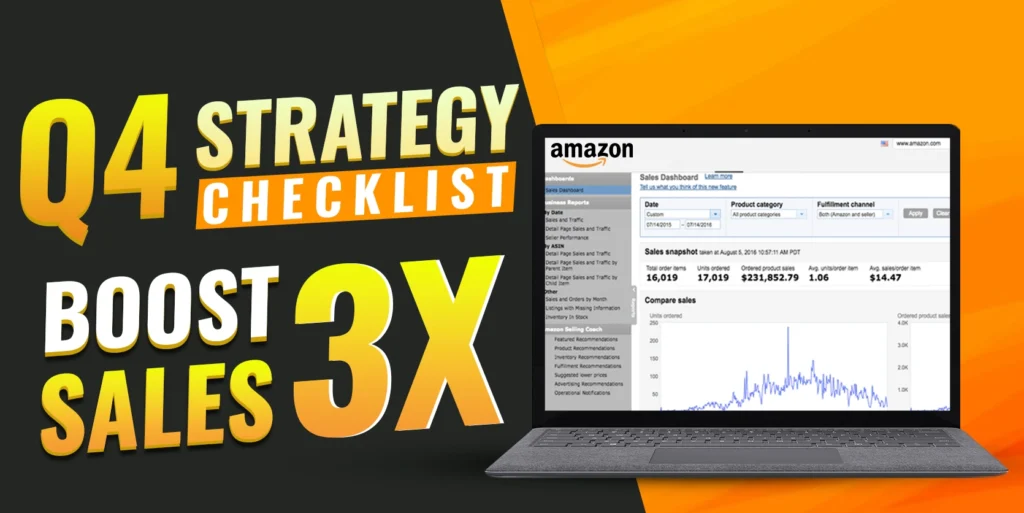Are you an Amazon seller looking to boost your product visibility and drive more sales through Amazon ads? It’s like the engine that drives traffic and boosts sales on the platform. In the fast-paced world of Amazon, keeping up with the latest advertising tricks is key to making the most of your investment.
In this blog, we’ll cover how Amazon PPC ads work, what the different ad types are, and how to organize your first campaigns. So if you want to optimize your Amazon Ads and grow your sales, you’ll enjoy the practical tips in this new guide.
Let’s dig in!
Fundamental of Amazon PPC
Every Amazon seller or vendor is always thinking about how to increase their sales. Even those who are thinking about becoming one are also wondering how to grow their sales. Amazon ads may seem to be a complex topic but if you understand the fundamentals and follow some basic guidelines you can quickly get a great return on your Amazon Ads investment and become an expert.
We’ll cover the fundamentals for you in the following part.
What is Amazon PPC?
Amazon PPC stands for Pay-Per-Click advertising. It’s basically a marketing method on Amazon where sellers and brands can advertise their products. You bid on specific keywords, and your ads appear in Amazon’s search results or even on competitor product pages. The key thing is, you only pay when someone clicks on your ad.

How does Amazon PPC Work?
Hold on! Before we go further into Amazon PPC, it’s important to grasp how it operates and what its main terms and features are.
Here’s a short overview of how Amazon PPC works:
Imagine you’re selling a “Yoga Mat” on Amazon.
- A customer searches for “Yoga Mat” on Amazon.
- Amazon shows all the relevant ads for the keywords “Yoga Mat.”
- Sellers bid on the keyword, and the highest bidder wins the auction.
- Amazon displays the winning Sponsored Product ad on the top of search results and the product details pages.
- When a customer clicks on the ad, the seller has to pay a small fee to Amazon.
Amazon PPC: Key Terms and Features
Before we get into the details of PPC, though, it’s significant to understand Amazon’s key PPC metrics. Understanding these metrics is essential for optimizing your campaigns and maximizing your return on investment. Here are the key Amazon PPC metrics and their explanations:
- Impressions: This Amazon PPC metric measures the number of times your ad has been displayed to Amazon shoppers. When anyone searches on Amazon using a keyword, and if your ads pop up, it means you receive an impression. This is how impressions are counted.
- Clicks: The number of people who clicked on your ads after they were displayed.
- Spend: The amount spent on your advertising campaigns after people clicked on your ads.
- Sales: This metric represents the total sales generated from ad-attributed clicks within a specific timeframe. Sales is the total value of products sold to shoppers attributed to your ads. It provides insight into the direct impact of your ad campaigns on sales.
- Advertising Cost of Sales (ACoS): ACoS is a crucial metric that represents the ratio of ad spend to attributed sales. It is calculated by dividing the total ad spend by the total attributed sales and multiplying by 100. A lower ACoS indicates more efficient ad spend and higher profitability.
If you want to know more on Amazon PPC metrics, you can check out another blog Amazon Advertising: Important Amazon PPC Metrics for Seller to get a clear idea on it.
Why is PPC important for Amazon sellers?
You understand Amazon ads, let’s understand why it is significant for your Amazon business.
As of March 2024:
“Estimated organic traffic on Amazon is around 750.75 million visits per month as of March 2024”
With the growing shift toward online consumer shopping, e-commerce brands and sellers find themselves with significant opportunities for success. PPC advertising plays a crucial role for Amazon sellers by enhancing product visibility, driving targeted traffic to their listings, and ultimately increasing sales.
By using PPC campaigns effectively, sellers can improve their product ranking on Amazon, compete more effectively with other sellers, and maximize their revenue potential.
Understanding Amazon’s PPC Algorithm
When it comes to selling on Amazon, we all want control over our investments, right? But some things are out of our hands, like Amazon’s mysterious algorithm. However, there are things we can control and understand better.
In Amazon’s PPC (Pay-Per-Click) advertising, there are parts we let Amazon handle, like how ads are targeted in Automatic campaigns and how broad keyword matches work. But there’s also stuff we can influence.

That’s normally a plan what we can set for campaigns structure details, in Realtime this might be different from ideal campaigns structure based on the performances
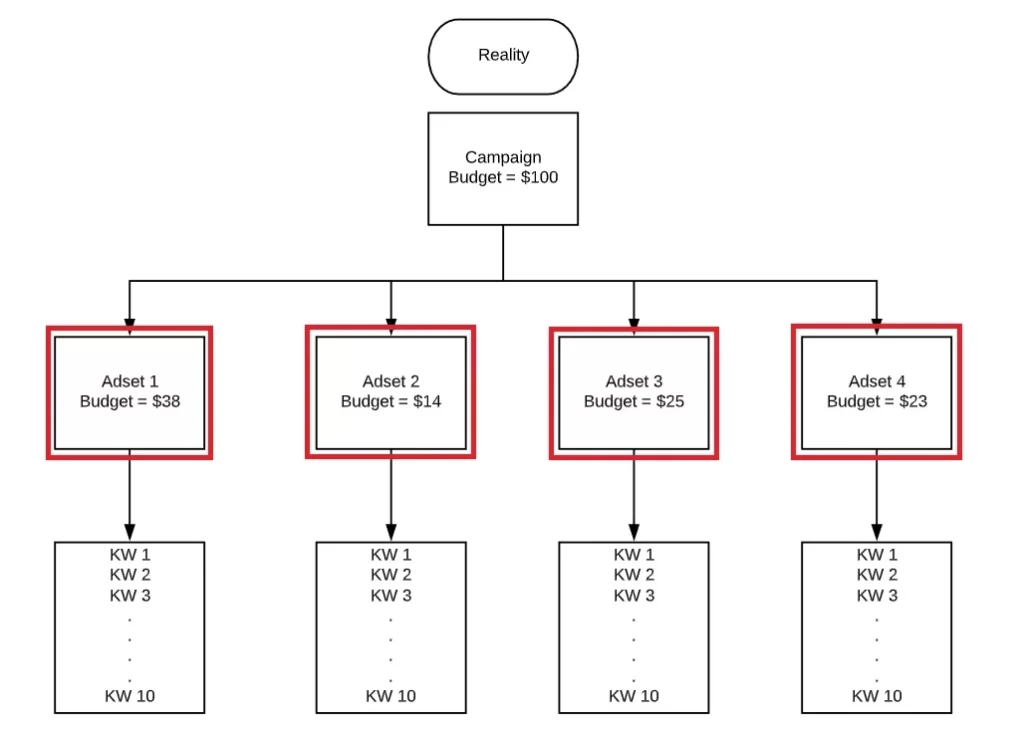
“Here’s an example: You set a $100 budget for your campaign and made two ad groups. You might think each group gets $25, but that’s not true.
After finding out that campaign budgets don’t get split evenly between ad groups, what’s the fix? Easy: just make one ad group per campaign. It might take a bit more time than making several ad groups, but it’s worth it.
How to Create an Amazon PPC Strategy
Let’s explore the fundamental components of creating an effective Amazon PPC management strategy:
- Establish clear goals: It is important to define your goal. Whether you want more sales, visitors, or people to know about your brand, having clear goals is key.
- Keyword Research: Find those magic words that Amazon shoppers are typing into the search bar. Potential keywords strategy will help you to grow your business quickly.
- Budget Allocation: Determine how much you’re willing to spend on PPC advertising, and allocate your budget across campaigns and keywords strategically.
- Campaign type: Check your automatic campaigns regularly to see how customers are searching and gather data for your manual campaigns. The search terms are vital for setting up manual campaigns. Before you change or remove a keyword from a manual campaign, make sure it has received at least 10 clicks.
- Testing and Iteration: Keep trying out different parts of your campaigns, like the words in your ads, the keywords you pick, how you bid, and who you target, to find out what works best for your products and the people you’re trying to reach.
Remember, PPC is an ongoing process. Experiment with different strategies, stay updated on Amazon’s advertising platform, and keep testing and optimizing to maximize your return on ad spend (ROAS).
Types of Amazon PPC ads
79% of Amazon small and medium-sized business sellers advertise their products on or off Amazon. Of those, here is the breakdown of sellers who use Amazon Pay-per-click (PPC) advertising:
- Sponsored Products ads (77% used)
- Sponsored Brands ads ( 39% used)
- Sponsored Display ads (30% used)
- Sponsored TV ads
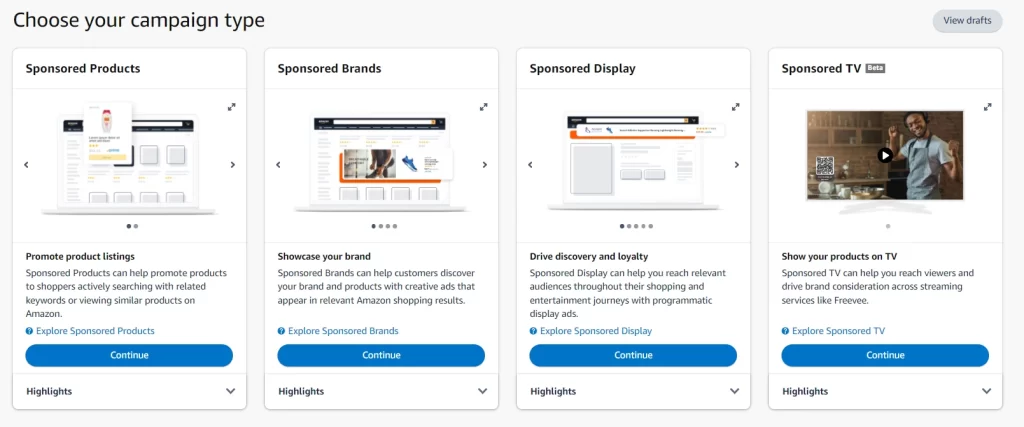
Let’s discuss the types of Amazon PPC ads available, in order of their popularity among third-party sellers:
- Sponsored Products ads
- Sponsored Brand ads
- Sponsored Display ads
- Sponsored TV ads
Sponsored Product Ads
Amazon Sponsored Product Ads are a type of advertising service offered by Amazon that allows sellers to promote their products within Amazon’s search results. These ads help increase visibility for specific products and drive traffic to product detail pages, ultimately leading to increased sales.
Sellers bid on relevant keywords, and when shoppers search for those keywords, the sponsored products appear alongside or within search results, marked as “Sponsored.” Sellers only pay when a shopper clicks on their ad, making Sponsored Product Ads a cost-effective way to reach potential customers. Some sellers report that a significant portion of their sales, ranging from 20% to 70% or more, can come from Sponsored Product Campaigns.
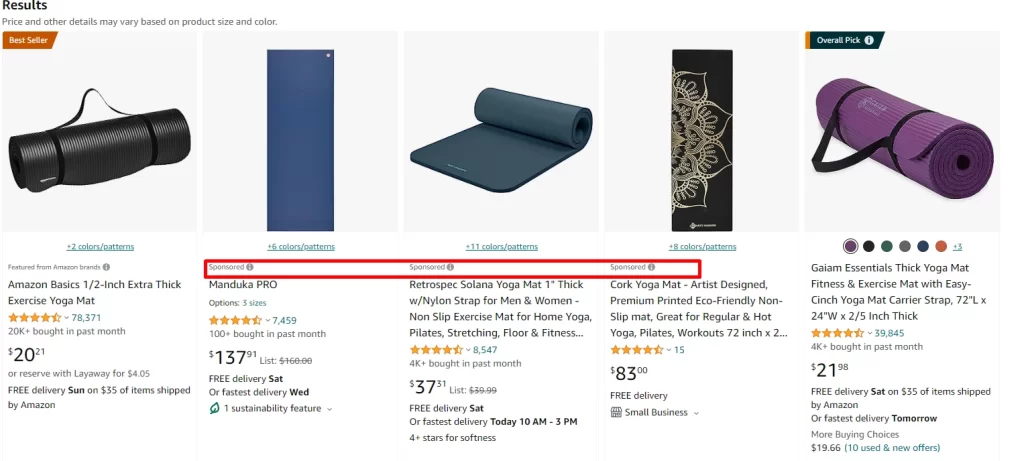
When creating Sponsored Products ads, there are two types of keyword targeting strategies a seller can use: automatic targeting and manual targeting.
Sponsored Brands Ads
Sponsored Brands ads, formerly known as “headline search ads,” allow sellers to drive awareness to more than one product at a time and catch shoppers’ eyes with more robust visuals than with Sponsored Products.
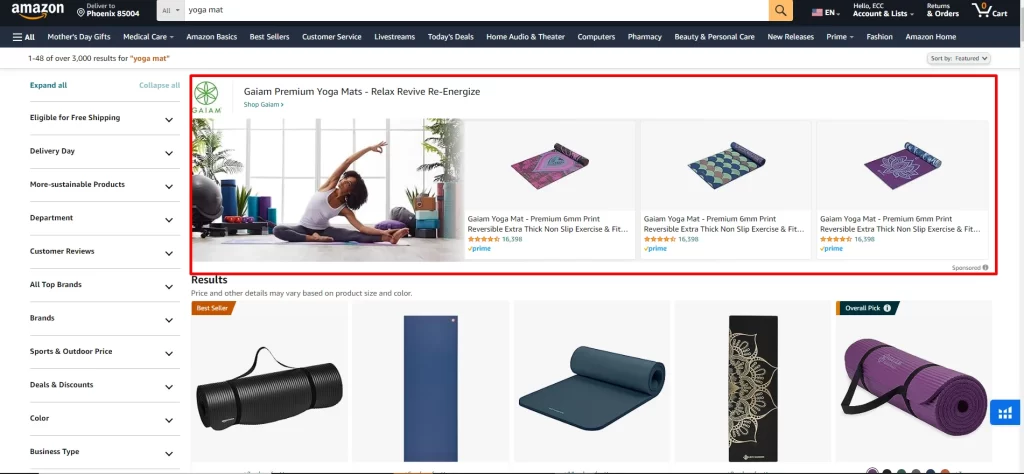
With Sponsored Brands, sellers can choose from three formats, which can appear either at the top of Amazon search results as headline banners or further down the page as a video.

“Product collection” and “store spotlight” ads typically include the brand’s logo, custom tagline, and two or more products, whereas the “video” format includes a 15-30 second-long video showcasing a single product. When clicked, these ads navigate the customer to a custom landing page or a brand’s Amazon Storefront.
Sponsored Display Ads
Sponsored Display ads help sellers reconnect with shoppers who looked at their product pages, both on Amazon and other websites. These ads show up not only on Amazon but also on other places like Google, Facebook, Netflix, and mobile apps. To use Sponsored Display ads, sellers need to have a registered brand, just like with Sponsored Brands ads.
sponsored Display Ads are like digital billboards placed strategically across the internet, showcasing your products to potential customers who might be interested but haven’t started searching on Amazon yet.
Sponsored TV Ads
Sponsored TV is a self-service ad tool that helps you reach new customers, even if you’re new to TV ads. It uses Amazon’s shopping and streaming data to target viewers. You can run ads on streaming TV services like Freevee and Twitch.
You control your spending with no minimum requirements and daily budget caps. If you need help with creating ads, Amazon Ads offers creative services. Sponsored TV ads can include interactive features like QR codes, letting viewers explore products on their mobile or add them to their cart using their TV remote.
How to Create Sponsored Products PPC Ads
As Sponsored Products ads are a good way to start with PPC, we’ll explain how to create one using different targeting methods. Sponsored products PPC ads are two types, automatic targeting and manual targeting. We will discuss it in detail below.
How to Create an Automatic-targeting Sponsored Product Ad
The process of creating an automatic-targeting Sponsored product ad is given below.
Step 1 : Log in to Amazon Seller Central and select Advertising > Campaign Manager
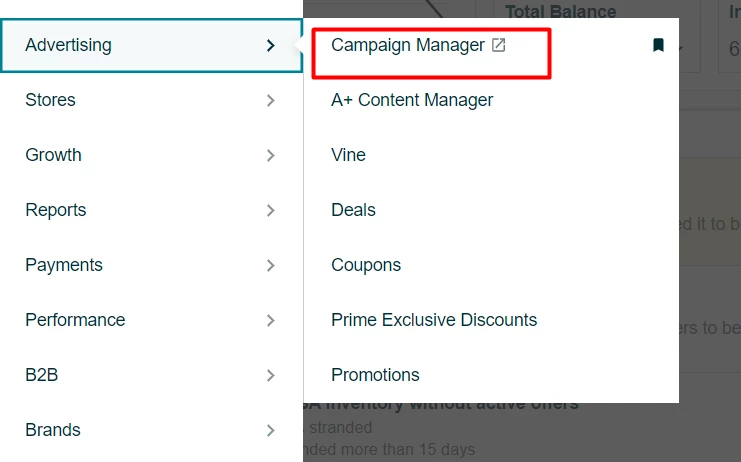
Step 2 : Scroll below the graphs and click on the red box “Create campaign” button
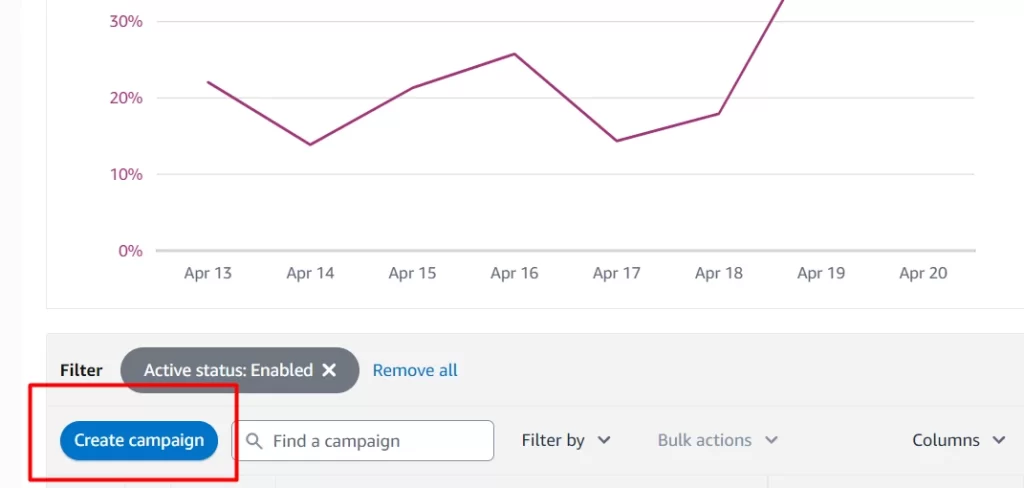
Step 3 :Click “continue” under Sponsored Products
Step 4 :Next, fill in the information on the Settings section of the Create campaign page.
Campaign name: Select a campaign name that reflects your products. While the name can be anything, choosing your product name can help you remember it easily. We recommend naming your campaign after the product and using the Ad Group name with the campaign type and any product variations, if applicable.
Date: Pick the start and end dates for your campaign. If you want it to keep going without a set end date, just leave that part blank.
Daily budget: Decide on the most you want to spend on ads each day. Amazon has a rule: if you don’t use up all your budget for a day, you can boost your ads by 10% later in the month.
Note: When you begin, set your daily budget at $50 or higher. Typically, each click costs between $0.50 to $1.50. If your budget is only $10, it’ll be used up quickly.
Targeting: For a sponsored product ad, select the automatic targeting option.
Step 5 : Choose your campaign bidding strategy
There are three types of campaign-bidding strategies for automatic targeting Sponsored Products ads.
- Dynamic bids – down only: Dynamic bidding is a feature that helps boost your campaign’s performance automatically. It predicts the chance of a click leading to a sale for your Sponsored Products ad. With the ‘dynamic bids – down only’ strategy, bids are lowered in real time for clicks that might not result in a sale. This helps optimize your ad spend by reducing bids in auctions where conversion is less likely.
- Dynamic bids – up and down: Dynamic bidding automatically improves your campaign by predicting if clicks will lead to sales for your Sponsored Products ad. With ‘dynamic bids – up and down,’ bids increase for likely sales and decrease for less likely ones. We adjust bids by up to 100% for top search result placements and 50% for others. For example, a $1.00 bid may increase to $2.00 for top placements and $1.50 for others.
- Fixed bids: You set your bid and Amazon does not change it – unless you choose to adjust it.
Step 6 : Create an ad group
On the same ‘Create campaign’ page, enter the following information:
Ad group name
Your ad group name represents the products sharing the same bids and budget. Again, the name can be anything, but ideally, it should help you remember the purpose of the ad group. We recommend that you name your ad group after the type of campaign (automatic or manual), plus the product’s variation.
Naming example:
Campaign name: laptop sticker
Ad group: automatic – 14-15 inch
Products
Select the products that you wish to advertise. We recommend selecting only one product per ad group or similar category when you are starting out.
Step 7 : Set your bids
There are two ways to set bids for automatic-targeting Sponsored Products ads:
Set default bid: A bid is the most you’re willing to pay for someone to click your ad. Your bids can change based on your bidding strategy and the placement you want. Starting with the suggested bid or higher can make your ad more competitive. The suggested bid is calculated from similar ads that won impressions recently. Each click deducts from your daily budget, and when it’s used up, your campaign pauses until the next day.
Set bids by targeting group: For more advanced automatic targeting, you can select bids by targeting groups, placing different amounts for each strategy.
There are four kinds of automatic targeting bid strategies:
- Close match: Amazon will show your ad to shoppers who use search terms closely related to your products. If your product is “Doppler 400-count Cotton Sheets,” it’ll show an ad when shoppers use search terms like “cotton sheets” and “400-count sheets.”
- Loose match: Amazon will show your ad to shoppers who use search terms loosely related to your products. If your product is Doppler 400-count Cotton Sheets, it’ll show an ad when shoppers use search terms like “bed sheets,” “bath sheets,” and “bath towels.”
- Substitutes: Amazon will show your ad to shoppers who use detailed pages of products similar to yours. If your product is “Doppler 400-count Cotton Sheets,” it’ll show an ad on detail pages that include “300-count Cotton sheets” and “queen 400-count Sheets.”
- Complements: Amazon will show your ad to shoppers who view the detailed pages of products that complement your product. If your product is “Doppler 400-count Cotton sheets,” it’ll show an ad on detail pages that include “queen comforter” and “feather pillows.”
Step 8: Add negative targeting keywords (optional)
If you don’t want your product to show up in certain keyword searches, you can add those keywords to the automatic-targeting list. When starting out, we recommend that you leave the list blank.
Step 9 : Launch campaign
Before launching a campaign be sure to double-check all of your information. Then, once you’re ready, click the ‘Launch campaign’ button at the bottom of the page. You can also save your draft if you need to come back to the listing later.
It usually takes 30 minutes to an hour for your ad to live on Amazon.
Congratulations on completing our guide to Amazon PPC strategy for 2024! By implementing these tips and staying informed about the latest trends, you’ll be well-equipped to drive traffic and boost sales on the platform. Keep experimenting, stay adaptable, and watch your business thrive. Happy selling!
If you need any help with Amazon PPC guide for advertising strategy, you can contact us via email at info@ecomclips.com with this blog reference. You can also check out Our Website, www.ecomclips.com to get useful blogs that may help out your business a lot. Our team can provide you with the best solution of all time.
